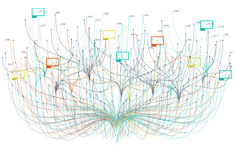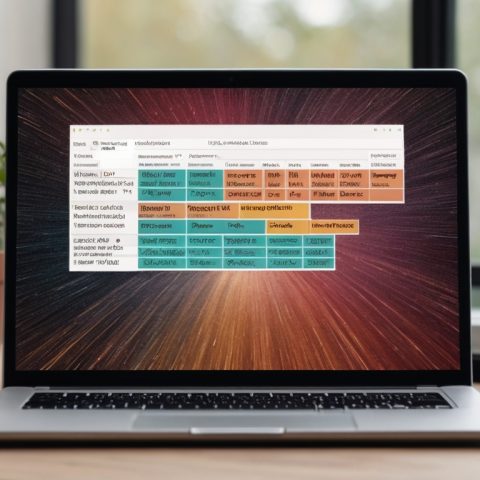Welcome back to another week of AI insights. Today, I want to share a little more about something that’s been on my mind lately: the datasets that are powering some of the coolest text classification models in 2024.
Have you ever wondered how AI seems to understand the content of news articles, detect fake news, or analyze the sentiment of social media posts?
As an AI enthusiast and quasi-researcher myself, I can tell you that the magic behind these capabilities often lies in text classification – and, more importantly, in the datasets used to train these models.
So why exactly should you care about these datasets? Well, whether you’re an up-and-coming data scientist, a seasoned MLE, or just curious about AI, understanding these datasets can give you valuable insights into the current state of AI technology. Plus, who knows? You might even find inspiration for the next globally game-changing project! AI is constantly evolving, and these datasets could be the key to unlocking the next big innovation in text classification.
Now, let’s roll up our sleeves, launch into focus mode and get started exploring these datasets together. I’ll do my best to keep things engaging and straightforward so you can easily grasp the concepts without getting lost in technical jargon.
1. BBC News Classification Dataset: Your Gateway to News Categorization
Imagine you’re building a news aggregator app. You want it to automatically sort articles into different categories so users can easily find what they’re interested in. This is where the BBC News Classification Dataset comes in handy.
What’s in the box? This dataset is a treasure trove of over 2,000 news articles, neatly categorized into five classes: business, entertainment, politics, sports, and tech. It’s like having a team of expert editors who’ve already done the hard work of sorting articles for you. The dataset also includes features such as word frequency, article length, and publishing date, which are crucial for training a text classification model.
Real-world application: Let’s say you’re working on an AI assistant for a news organization. By training a model on this dataset, your assistant could automatically tag incoming articles, making it easier for journalists to organize content and for readers to find relevant stories. This could significantly improve the efficiency of newsrooms and the user experience for readers, potentially leading to increased readership and revenue.
Why it’s popular: The BBC News Classification Dataset shines because of its clean organization and diverse content. It’s a great starting point for anyone looking to dip their toes into text classification, offering a balanced mix of categories that reflect real-world news distribution.
Link: https://www.kaggle.com/datasets/yufengdev/bbc-fulltext-and-category
2. Hate Speech and Offensive Language Dataset: Tackling Online Toxicity
In today’s digital age, combating online toxicity is more important than ever. The Hate Speech and Offensive Language Dataset, available on Kaggle, is at the forefront of this battle.
What’s it all about? This dataset is designed for multiclass classification, allowing you to train models that can distinguish between hate speech, offensive language, and neutral content. It’s like teaching an AI to be a respectful and discerning participant in online discussions.
Real-world impact: Imagine you’re part of a team developing a new social media platform. You want to create a safe and inclusive environment for all users. By leveraging this dataset, you could build an AI moderator that automatically flags potentially harmful content for review. For example, it could identify a post containing racial slurs as hate speech while recognizing that a heated but non-offensive debate about politics is acceptable.
Why it’s gaining traction: The need for effective content moderation grows as online interactions continue to increase. This dataset provides a valuable resource for researchers and developers working on solutions to make the Internet a much safer place. Its popularity stems from its relevance to current social issues and its potential to drive positive change in online communities.
Link: https://www.kaggle.com/datasets/mrmorj/hate-speech-and-offensive-language-dataset
3. Fake News Detection Dataset: Separating Fact from Fiction
In an era of information overload, distinguishing between genuine news and misinformation has become crucial. Enter the Fake News Detection Dataset, a powerful tool in the fight against disinformation.
What’s under the hood? This dataset, utilized by a team from UC Berkeley, enables the creation of multiclass classifiers that can categorize news articles into three buckets: fake news, clickbait, or legitimate content. It’s like having a team of fact-checkers working around the clock to verify information.
Practical application: Let’s say you’re collaborating with a major search engine to improve the quality of news results. You could develop an AI system that flags potentially misleading articles by training a model on this dataset. For instance, it might identify a sensationalized headline about a celebrity death hoax as clickbait while recognizing a well-sourced article about scientific discoveries as legitimate content.
Why it’s making waves: This dataset addresses a pressing need in our current climate of “fake news” accusations and actual misinformation. Its popularity stems from its potential to enhance media literacy and combat the spread of false information. By providing a foundation for fake news detection systems, it’s contributing to a more informed and discerning public.
Link: https://makenewscredibleagain.github.io/
4. Text Emotion Dataset: Decoding the Feelings Behind Words
Have you ever wished you could understand the emotions behind a text message or email? The Text Emotion Dataset, available on Kaggle, is making this possible.
What’s inside? This dataset is a goldmine for emotion classification projects. It allows you to train models that can determine the emotion being conveyed in a piece of text. It’s like giving AI the ability to read between the lines and understand the feelings behind the words.
Real-world scenario: Imagine you’re working on improving customer service for a large e-commerce company. By using this dataset to train an AI model, you could create a system that automatically detects the emotional tone of customer inquiries. For example, it could identify frustration in a complaint about a delayed shipment or excitement in a query about a new product launch. This emotional intelligence would allow the company to prioritize and respond to customer needs more effectively.
Why it’s capturing attention: As AI becomes more integrated into our daily lives, there’s a growing demand for systems that can understand and respond to human emotions. This dataset’s popularity lies in its potential to make AI interactions more empathetic and human-like. The applications are impressive, vast and exciting, from improving chatbots to enhancing social media analysis.
Link: https://www.kaggle.com/datasets/pashupatigupta/emotion-detection-from-text
5. Sentiment140 Dataset: The Pulse of Brand Perception
In the age of social media, understanding public sentiment towards brands is more crucial than ever. The Sentiment140 Dataset offers a window into this world of online opinions.
What does it offer? This dataset contains a wealth of data on brand sentiment from Twitter. It’s designed for sentiment analysis projects, allowing you to classify text as positive, negative, or neutral. It’s like having millions of focus group participants sharing their honest opinions about various brands.
Practical use case: Let’s say you’re part of a marketing team for a global soft drink company. By training a model on the Sentiment140 Dataset, you could create a real-time sentiment analysis tool for your brand. This tool could track public reaction to a new product launch, alerting you to positive buzz or potential PR issues. For instance, it might detect a surge of positive sentiment following a well-received Super Bowl commercial or flag negative reactions to a controversial marketing campaign.
Why it’s a game-changer: In today’s fast-paced business environment, quickly understanding and responding to public sentiment can make or break a brand. The Sentiment140 Dataset’s popularity stems from its direct applicability to real-world business challenges. It provides a foundation for tools that can help companies navigate the complex world of public opinion, enabling more responsive and effective marketing strategies.
Link: https://www.kaggle.com/datasets/kazanova/sentiment140
The Unrelenting Power of Text Classification Datasets
As we’ve explored these five datasets, you might have noticed a common thread: they’re all about making sense of the vast sea of text data surrounding us. From news articles to tweets and customer reviews to online comments, these datasets are helping AI understand and categorize the written word in increasingly sophisticated ways.
But why does this matter to you? Well, if you’re a data scientist or AI researcher, these datasets provide invaluable resources for training and testing your models. They offer benchmarks against which you can measure your algorithms’ performance, and they inspire new approaches to solving real-world problems.
Even if you’re not directly involved in AI development, understanding these datasets gives you insight into the capabilities and sometimes even the limitations of the AI systems you encounter daily. That news app that seems to know exactly what stories you’re interested in? It might be using techniques similar to those developed with the BBC News Classification Dataset. The social media platform that keeps your feed relatively free of offensive content? It could be employing models trained on the Hate Speech and Offensive Language Dataset.
Moreover, these datasets highlight the areas where AI is making significant strides. Fake news detection, emotion recognition, and sentiment analysis are not just academic exercises – they’re technologies that are shaping our digital experiences and influencing how we interact with information and each other online.
As we look to the future, it’s exciting to consider how these datasets might evolve. Will we see even more nuanced emotion classification datasets that can detect subtle tones like sarcasm or empathy? Might we develop fake news detection datasets that can identify more sophisticated forms of misinformation? The possibilities are endless, and they all start with the data we use to train our AI models.
These top 5 text classification datasets are more than just collections of text – they’re the building blocks of AI systems that are changing how we interact with information, brands, and each other online. Whether you’re a developer looking to create the next extensive AI application, a business leader seeking to understand customer sentiment, or simply someone interested in how AI shapes our world, these datasets offer a fascinating glimpse into the future of artificial intelligence. Still thirsty for more data sets? Be sure to check out our other popular dataset blog posts: Top 10 Open Source Data Labelling Tools for Computer Vision & Top 25 FREE Twitter Training Datasets for Data Scientists.
And the conversation doesn’t have to end here. I’m super curious to hear about your experiences with these datasets or others you’ve found valuable. Do you have a favourite dataset that didn’t make this list? Or perhaps you’ve used one of these in an exciting project? I encourage you to share your thoughts and experiences in the comments below. Your insights could be invaluable to others in our community.
Moreover, if you’re intrigued by the world of text classification and AI but find yourself with questions, don’t hesitate to reach out to us! We’re always excited to discuss AI applications, answer questions, and help you navigate this fascinating field. And please remember, whether you’re a data scientist or just starting your AI journey, our community is yours, and we’re all here to help support each other.










